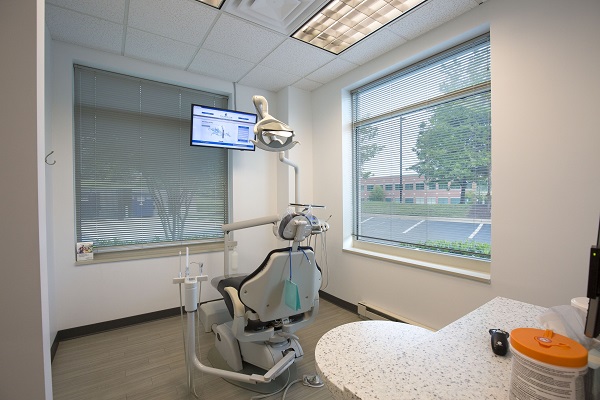When is a Bone Graft Recommended for Dental Implants?

A bone graft might be necessary when you are getting ready to have a dental implant placed. When you lose a tooth, the jawbone begins to deteriorate shortly afterward. If there is not enough bone to support a dental implant, all is not lost. Bone grafting can help to build the jawbone and give you the complete smile you desire.
Once a tooth is lost, the jawbone is no longer being put to work. The lack of bite force applied to the bone causes it to shrink away over time. However, when a dental implant is placed, there needs to be sufficient bone density for it to be supported correctly. Once the implant is in the bone, it fuses to the jaw and becomes a permanent part of the mouth. In fact, implants prevent the jawbone from deteriorating any further since the bone is being used once again.
The bone in the front of the mouth tends to shrink quicker than in the back of the mouth. Less bone density is required when an implant replaces the back molars in contrast to the front incisors. There are other methods to avoid bone grafting, such as placing the implants at an angle, giving more support to the attached crown.
How do dental implants work?
Dental implant surgery has a very high success rate. The only times when a dental implant fails is when too little bone density is used for placing the implant. This rarely happens, but when it does the result is a painful procedure to remove and replace the implant. Bone grafting helps to avoid this situation.
Implants typically need about 6 millimeters of bone for success. Dental implants are 4 millimeters. If there is any less than 6mm left at the site of the implant, bone grafting is often required.
When an implant is placed, it is surgically inserted into the jawbone. The screw-like titanium post that acts as the new tooth root fuses with the bone over a period of 6 months to one year. After the implant placement has been determined as a success, the crown is then placed atop a connector between crown and post.
The bone grafting procedure
Bone grafting can be done in a variety of different ways. Most of the time, bone grafts are completed at the time of tooth extraction, known as a socket preservation bone graft. The most common materials for bone grafting is using demineralized cow bone or human bank bone rather than using bone from the patient. A small membrane is then placed over the socket to protect the newly formed bone.
Another method for bone grafting is known as the onlay bone graft. This is done when an existing site without a tooth does not have enough bone to support a dental implant. Onlay bone grafts are more invasive, as more time has passed between tooth loss and bone graft.
The bone graft takes about 4-6 months to form completely and be ready for dental implant placement. A successful bone graft will add 30% more bone to the area.
Give us a call today if you'd like more information on bone grafting!
Request an appointment here: https://www.titandentalcare.com or call Titan Dental Care at (703) 745-3227 for an appointment in our Sterling office.
Check out what others are saying about our services on Yelp: Read our Yelp reviews.
Related Posts
A bone graft of the jaw may be necessary before a dental implant can take place. An implant needs a sufficient amount of bone to bond with, but tooth loss can cause this to break down. Therefore, sometimes it is necessary to build the jawbone back up to protect the integrity of the implant.Material for…
Dental bone grafts are often necessary dental procedures. They can help solve a lot of problems such as missing tooth replacement or diseased gums treatment. Thankfully, with the help of modern dentistry, the technology used for dental bone grafts has expanded tremendously.If you want to know more about dental bone grafts, you may find this…
Dental bone grafting is a treatment used to shape, restore, repair or strengthen the bones that support our teeth. It is used to add bone mass to a jawbone that is malformed, worn out, weakened or injured.Just by listing some uses of dental bone grafting, we can already visualize situations where a dentist, periodontist or…
A dental bone graft is sometimes necessary when getting implants. The procedure is nowhere as scary as it sounds, and it is usually done when a patient does not have enough healthy bone tissue to support the installation of implants.Implants are one of the most popular prosthetics used to replace missing teeth. These devices function…


